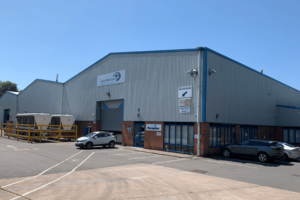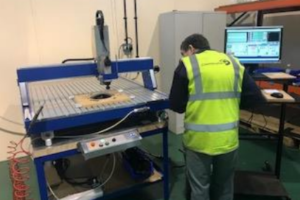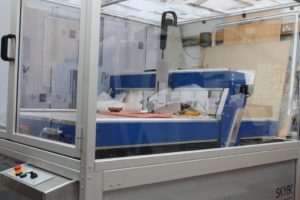August 20, 2016

Amorphous Polymer: Amorphous means irregular, having no discernible order or shape. In the context of solids, the molecules are randomly arranged, as in glass, rather than periodically arranged as in a crystalline material. Amorphous polymer has a glass like structure with tangled chain and no long range order.
Cavity Pressure: Pressure on the melt inside the space between core and cavity as the melt moves to fill the mould.
Changeover – Fill/Pack: Switch over point fill to pack: The point on injection stroke at which filling phase with speed profile ends and pack or pressure phase with pressure profile starts.
Clamp Force: It is force applied by the machines clamping unit to the mould during filling, packing and holding phases of moulding cycle. Unit is Tons or kN.
Cooling Channels: It is the channels through which coolant is flown to remove heat from the mould. The channels are to be located thoughtfully in the core and cavity so that the temperature distribution over the mould surface is constant with little acceptable variation.
Co-polymer: Polymers that are derived from more than one species of monomers.
Crystalline: It is the structure of polymer where the molecules are arranged in a very regular repeating lattice structure.
Cure: The process of changing property of polymer into a more stable and usable condition. This is accomplished by the use of heat, radiation or reaction with chemical addition.
Cushion: It is the small amount of melt that is left in the barrel at the end of injection, follow up pressure. The cushion prevents the screw tip from making contact to the head of barrel.
Cycle Time: A sequence of operation that is repeated regularly, the time it takes for one such operation. It is the time required to complete one moulding cycle.
Dosing Stroke: Metering stroke: It is stroke of screw that determines the quantity of melt to be injected to the mould.
Feed System: It is the main connecting channel between the machine nozzle and the part cavities of the mould.
Feedback: Feedback in a closed loop system represents the return signal or response of the system to input instruction.
Fill Pattern: It is a visual history of how a mould fills under a specific set of moulding conditions.
Fill Time: Fill time is the time in seconds that it takes to just fill the mould with melt during the filling phase (up to switchover point) of the moulding cycle.
Flow Balancing: Flow balancing is the process of choosing a mould design strategy, which promotes even filling of mould. First, a gating strategy is selected which will promote ease of filling. Second, a runner layout is developed to feed material to the gates. Finally runner dimensions are identified which will cause all of the flow paths to fill at the same time. Even wall thickness can be manipulated by flow leader or flow deflectors.
Flow path: A flow path describes the route that is travelled by a melt front as melt fills a section of a mould.
Flow Rate: Flow rate is a way of describing how much material goes through or past a specific point in a fixed period of time. If nozzle tip is used as reference, flow rate can be described how much melt is flowing out of the machine per second during injection.
Flow Length: Flow length is the total distance that melt must travel from the machine nozzle along a particular flow path in order to fill a section of the mould.
Follow up Pressure: It is pressure on melt after the switch over point in the moulding process.
Fountain Effect: The fountain effect describes how the melt front behaves during the filling of the mould. The leading melt front swells into the shape of a bubble; it behaves in much the same way as water flowing from a fountain.
Frozen Layer/Skin: The frozen layer is a skin of solid melt that forms next to the mould surface during the filling phase of the moulding cycle.
Gating Strategy: It is the approach you use to choose the number, dimension and location of gates in a mould.
Glass Transition Temperature: It is the point at which the polymer hardens into an amorphous solid.
Hold on Pressure: Follow up pressure: It is pressure on melt after the switchover point in the moulding process.
Homopolymer: A polymer that is constructed of identical monomers.
Injection Rate: It is the flow rate of melt (cc/sec) coming out of nozzle. Melt comes out in the form of jet. Then it spreads inside the mould in shape of the space between the core and cavity.
Injection Speed/Velocity Profile: Before the switch over point the set pressure remains constant but set injection speed is varied with stroke position. After switch over point injection speed should remain at lower value and pressure is changed with time until the mould is just filled without over packing. The variations in the set speed
throughout the injection stroke is called Injection speed profile.
Injection Pressure Profile: Before the switch over point the set pressure remains constant but set injection speed is varied with stroke position. After switch over point injection speed should remain at lower value and pressure is changed with time till the mould is just filled without over packing. This set pressure for filling stage and follow up / hold on pressure change with respect to time is called Injection pressure
profile.
Maximum Shot Capacity of Machine: In machine specification it is given in terms of weight for PS. For other polymers the density of polymers at moulding temperature should be multiplied to the maximum swept volume of the machine barrel to get the weight for the given polymer.
Metering Stroke: It is stroke of screw that determines the quantity of melt to be injected to the mould.
Melt Expansion: During the injection stroke melt is compressed by about 5 to 15%. After melt enters the mould it gets the chance to relax and expand.
Melt Front: As the mould is filling, the melt at the leading edge of flow is called the melt front or stream.
Melt Front Velocity: It is not same as injection piston (screw velocity) velocity. As melt enters mould it spreads in all direction depending on the resistance to flow in each direction. Melt front velocity is determined by the area of flow, which does not remain constant with time.
Melt Temperature: Melt temperature is the actual temperature of the melt during processing. The melt temperature is constantly changing. It varies with time and will not be the same at different locations in the mould.
MFI: It stands for Melt Flow Index. It is the weight of polymer melt in grams extruded in 10 minutes through a standard nozzle or die under standard load condition at a certain temperature.
Mould Cooling: Mould cooling describes the process by which the melt temperature is reduced to the point where part can be removed from the mould.
Mould Packing/Follow up Pressure/Hold on Phase: Mould packing is the process of delivering an additional amount of melt to the mould, to compensate for the shrinkage after filling.
Mould Temperature: It refers to temperature of mould surface in contact with melt. It varies from point to point on surface if cooling design does not provide uniform heat extraction. It also fluctuates if heat is not balanced.
Moulding Cycle: The moulding cycle is the series of steps that result in the machine producing a part. The cycle is usually described by breaking down into four separate phases. The amount of time that it takes to complete one cycle is called cycle time.
If you have any questions relating to the above glossary then contact Pete with your question.
PS Check out Part 2 “Pete’s N-Z glossary“

July 04th, 2019
Leading technical injection moulder, Counterplas, has set ambitious growth targets, buoyed by their recent move to a large new facility in South Staffordshire.

February 02th, 2018
Counterplas have invested in the latest Rhino version 5 software, widely acclaimed as the world’s most robust 3-D development platform for specialty modelling, rendering, analysis, and fabrication tools.

January 08th, 2018
We have invested in a new CNC routing system for production of illuminated bespoke street furniture for a new client in Germany. A ‘blank’ is injection moulded and then routed to provide one of 270 variants.